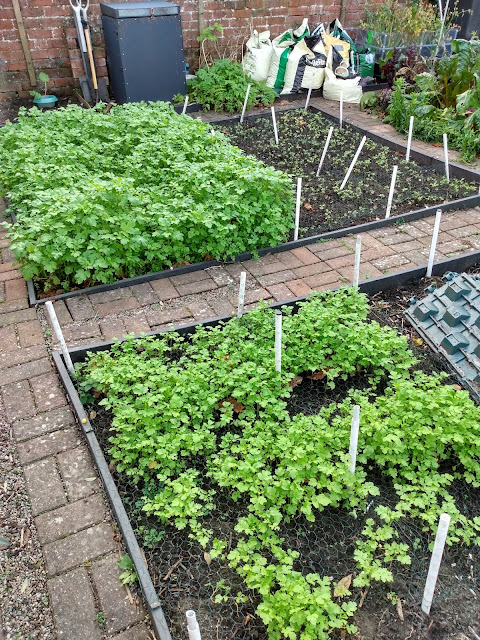Green manures are fast-growing plants that provide ground cover which, at a later date, can be dug into the soil to add nutrients and improve soil structure. There are different types depending on the time of year they are sown; usually mixtures of legumes and grasses. For my purposes, I need to cover bare soil in the kitchen garden over winter - otherwise, the local cat population just adopt my vegetable plots as new toilet areas. Usually, I make do with covering the uncultivated ground with black plastic to suppress weeds, keep the cats off and prevent nutrient wash-out. As an added bonus, slugs think they are hidden on the surface of the soil and can be picked off with ease.
In the past, I have not had much success with green manures. My summer vegetable plots remain productive until well into October. By which time it is often too late to get the green manure established enough to survive winter. In any case, I thought I would give it another go after finding a packet of seeds with a use-by-date of 2018!!
The photo below shows three 'plots' of green manure sown at the beginning, middle and end of October. I think it is fairly obvious which is which. The white sticks are holding chicken wire netting in place to deter the usual four-legged suspects and are removed once the plants are established (as was the case with the earliest sowing). We have had a very mild October and November so far.
Some of the advantages of green manure are:
- Suppresses weeds by providing ground cover
- Retains soil nutrients by returning those drawn up by the plants to the soil when dug in later
- Legumes will fix nitrogen
- Reduces nutrient washout
- Provide shelter for beneficial insects such as ground beetles
- Can harbour slugs & snails but we will deal with them later.
- Needs to be dug in and left for two weeks before sowing/planting (because the composting bacteria responsible for the decaying process get first use of the available nitrogen needed by new plants)
- Mustard green manure (a brassica) might encourage club root - so avoid brassicas as the following crop.







0 comments:
Post a Comment